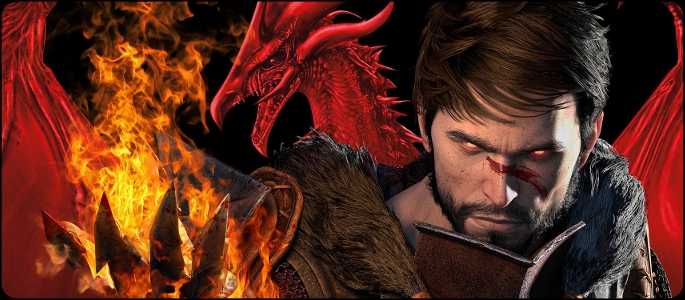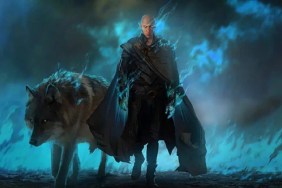BioWare is known for bringing high quality and epic RPGs to their fans, having been highly praised for the Mass Effect franchise. However, the recent Dragon Age: Origins, released a mere year and a half ago, did not receive the same level of enthusiasm from critics, but was still secure as a good RPG experience. Now they’ve released the follow-up, Dragon Age 2, and its time to find out if the improvements have the game flying high with its brethren, or crashing to the depths of gamer hell.
Dragon Age 2 starts off with a dwarf named Varric being hauled into a darkened chamber, where he is interrogated by a Chantry seeker regarding the Champion of Kirkwall. Varric then begins to narrate the tale that makes up Dragon Age 2, and he starts off with a bit of embellishment. As players take control of the Champion, they already have a multitude of powers which can deal quite a bit of damage to opponents. This part provides a good opportunity to experiment with skills that can be unlocked later, but it is short-lived when the seeker calls out Varric for spinning lies. Nonetheless, the introduction remains strong, for when he starts to tell the real tale of the Champion’s arrival to Kirkwall and subsequent deeds that earn the title, it is filled with tragedy, desperation, and violent intensity.
Varric begins his tale well before Hawke earns the title of Champion, during the last events of Dragon Age: Origins. The fifth blight has spread over Ferelden, and monsters are killing everyone in their sight. Fleeing from Ferelden with their family, our hero has darkspawn on their heels, and is heavily outnumbered. Shortly into their escape new allies are encountered, where the first social conflict also occurs. One of the new allies is a Templar, who is sworn to protect the people by capturing rebel mages in order to prevent the forbidden use of blood magic. The champion’s sister, Bethany, is a mage, and depending on the player’s decision they may be a mage as well. For the moment, the situation is too dangerous to consider these facts for long, and they move on to escape. Eventually our hero reaches Kirkwall, where this introductory chapter ends and we fast forward to a year later, after the blight has ended and cities are trying to restore order.
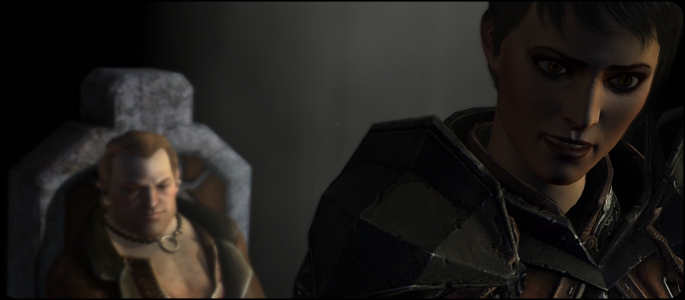
The choices a player makes are central to Dragon Age 2’s gameplay and story. Even the very first decision made, which is character gender and class, determines the outcome of the introductory chapter of the game. Who allies with the Champion, who opposes them, who lives, and who dies, may all be determined by the player and their decisions. You can’t run around simply killing anyone you want, since most of these choices occur in conversations which determine the outcome, and even effect plot points far later in the game. Thus, it is often times difficult to tell what the overall result will be, and the Champion must simply deal with the consequences as they arrive.
For example, early in the game a mage in trouble will be encountered. The mage is arguing with a Templar, and here you are given the opportunity to save the mage, help the Templar, or simply stand by and do nothing. If you help the Templar, it may open up another quest opportunity later from that same individual. On the same hand, helping the mage may do the same. This conflict between mages and Templars, and all the various moral implications of each side’s arguments are a central theme in Dragon Age 2, and it is not always clear cut what the correct decision is, if there even is one. This moral ambiguity creates an opportunity for many tough choices to arise, and your party members play into it a lot as well.
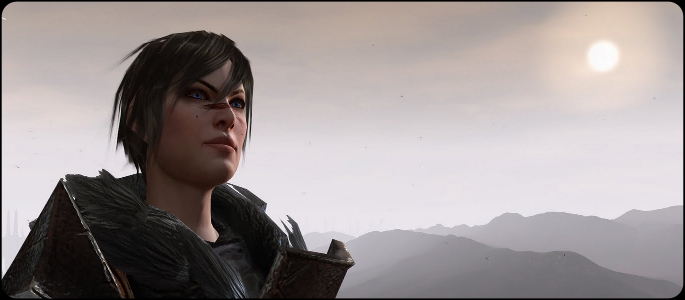
Throughout the game you’ll encounter several individuals that will join your questing for various reasons. Each already has a weapon style and class chosen, and at any given time you may have three members in the party in addition to the champion. Everyone has a specialized skill tree, multiple skill trees that apply to their class, and a skill tree that applies to their weaponry. While it’s logical to select your allies based on these abilities, their personalities and situations play heavily into the plot as well. Several of them are mages, who face the danger of being captured by the Templar and turned “tranquil”. This means they’ll be cut off from their magic, but unfortunately they are left with virtually no personality either, and will be a husk of their former selves. Clearly this is far from desirable, and your decision to either save them from this fate or doom them to it will reflect upon the relationships with allies in your party. According to your behavior, and their opinion on the situation, you will develop either a rivalry or friendship with each character. Once a full rivalry or friendship is achieved, a special passive bonus is unlocked, as well as various side missions.
Thus it becomes smart to select the correct party members for the correct situation, but sometimes doing so may become tedious, since it requires running to a certain area to switch party members. However, Dragon Age 2 allows all characters to develop simultaneously, so that switching to a previously unused ally doesn’t leave them powerless with respect to everyone else. With a lack of penalty for switching party members consistently, there’s very little reason left not to. Party members also chatter among themselves while running around Kirkwall, and the discussions vary based on who’s there. Merrill, a mage, may argue with Fenris, a warrior who despises mages. Meanwhile Varric, the rogue dwarf, jokes about naughty perversions with Isabela, the beautiful and deadly pirate. Aveline, the law-abiding soldier may the chime in with disapproval for their questionable acts. This results in an easy way to get to know the characters, and lends depth to their personalities and background stories.
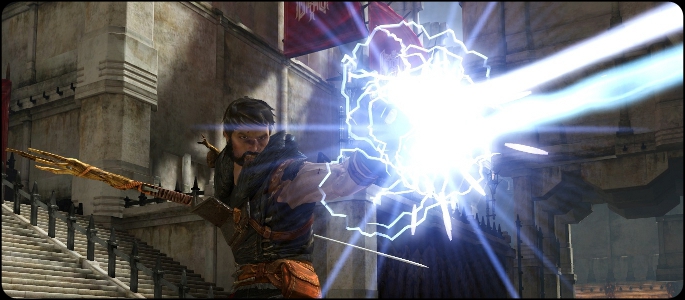
The combat system itself is very easy to use for novice players, and initially plays out more like an action game than your typical RPG. Tapping X utilizes a character’s basic attack, while the other face buttons can be mapped to hot-key any abilities or potions in the player’s possession. This makes accessing advanced moves quick and easy, and lets the action flow quickly. Any character in the party can be controlled at any time, with a simple tap of L1 or R1 switching between members. A tactics system allows for adjustment of the automated controls for characters that aren’t currently selected, and additional tactics slots unlock throughout the game. For example, you may want a mage to cast a healing spell on allies when their health is low, while you directly control a warrior for offense. Tactics can be set so that mage automatically casts the healing spell any time an ally’s health is less than fifty percent. Paying careful attention to this makes your party more efficient, but at some point even tighter control of the battle will be necessary.
Eventually more difficult battles will be encountered, and simply running it to deliver damage won’t cut it. Tapping L2 at any time pauses the game, bringing up a radial menu where all of a character’s abilities can be accessed, whether they’ve been hot keyed or not. Whether it’s drinking a potion, activating an ability, or directing a party member to go to a specified position and hold it, this is where the real tactics of the game can be accessed. In the normal mode, you can get away with using it sparingly, but in harder modes it will become necessary to use. Within this ability wheel, an order can be given to one party member to cast a spell, then tapping L1 can switch to the next character who can be given an order, and so on until all four members have a command issued. Tapping L2 again then unpauses the game, and all four characters initiate their directives simultaneously. Thanks to this system, novice players can go through easy and most of normal mode while playing a straight forward action game, but advanced RPG enthusiasts can increase the difficulty which will require more turn based play. Party management becomes very important as a result, and with a lot going on in the battlefield at once, this feature should be used often. Continue reading…
